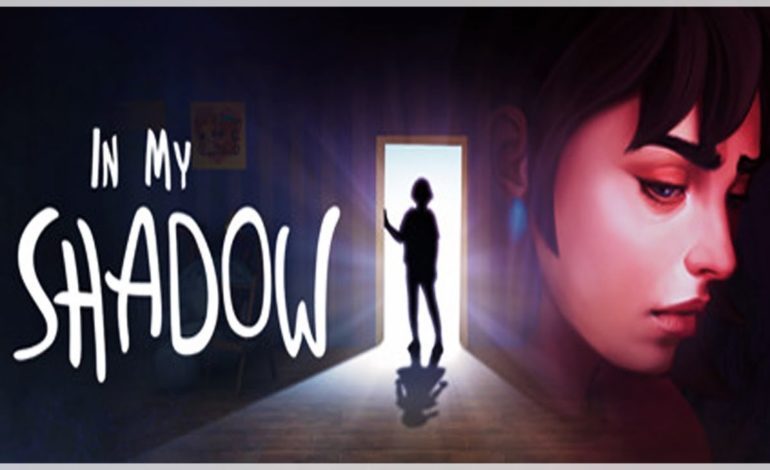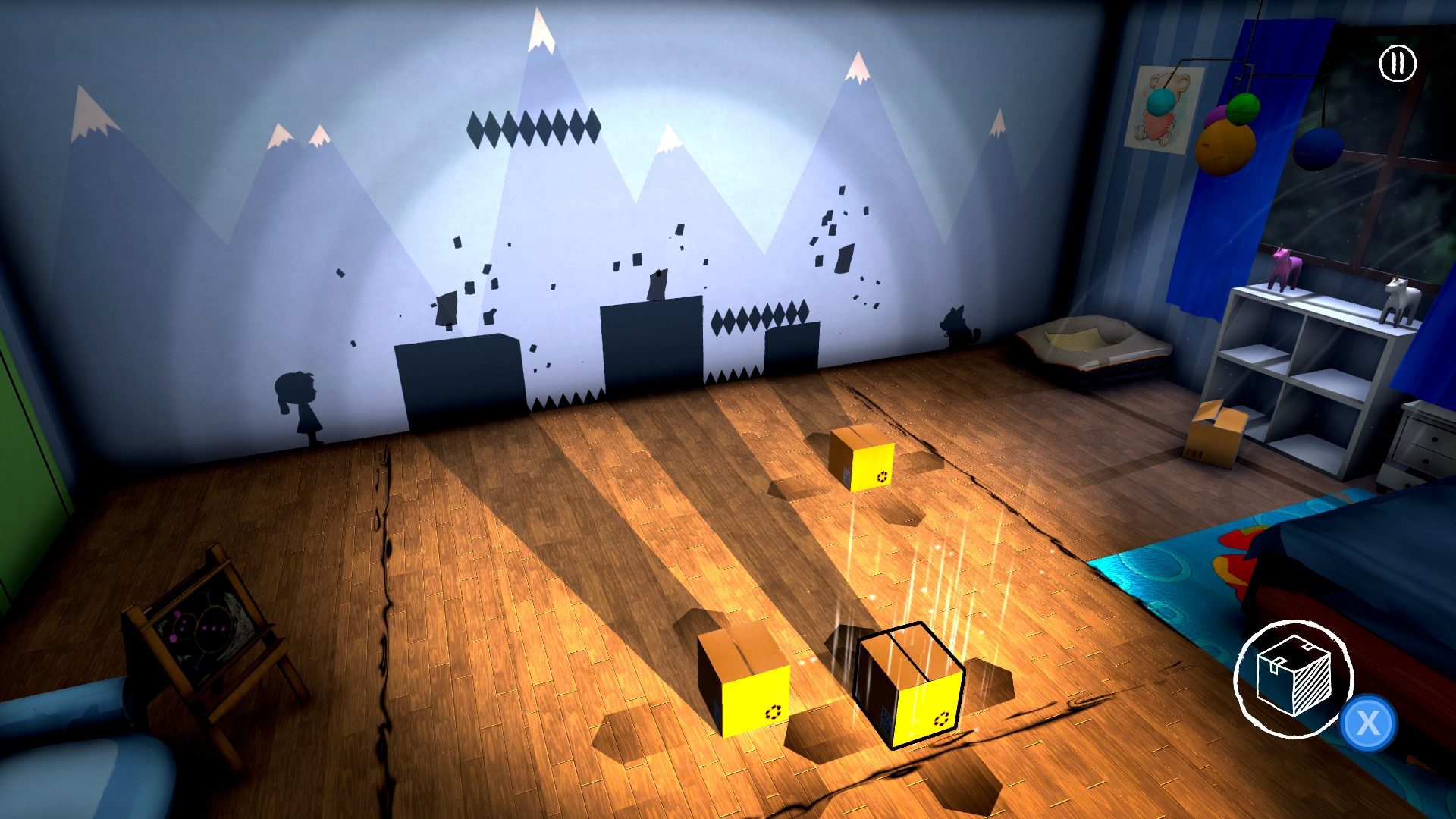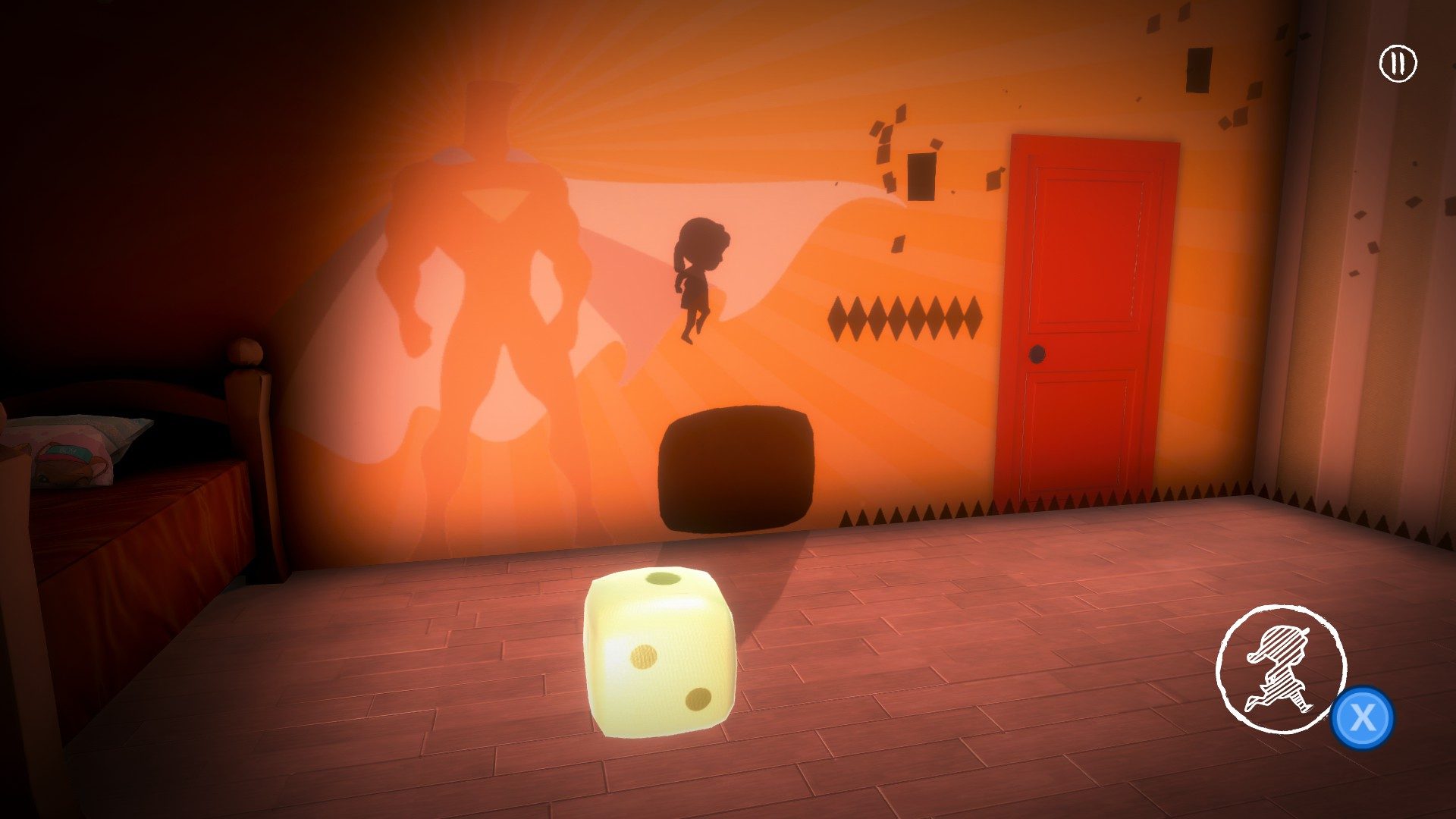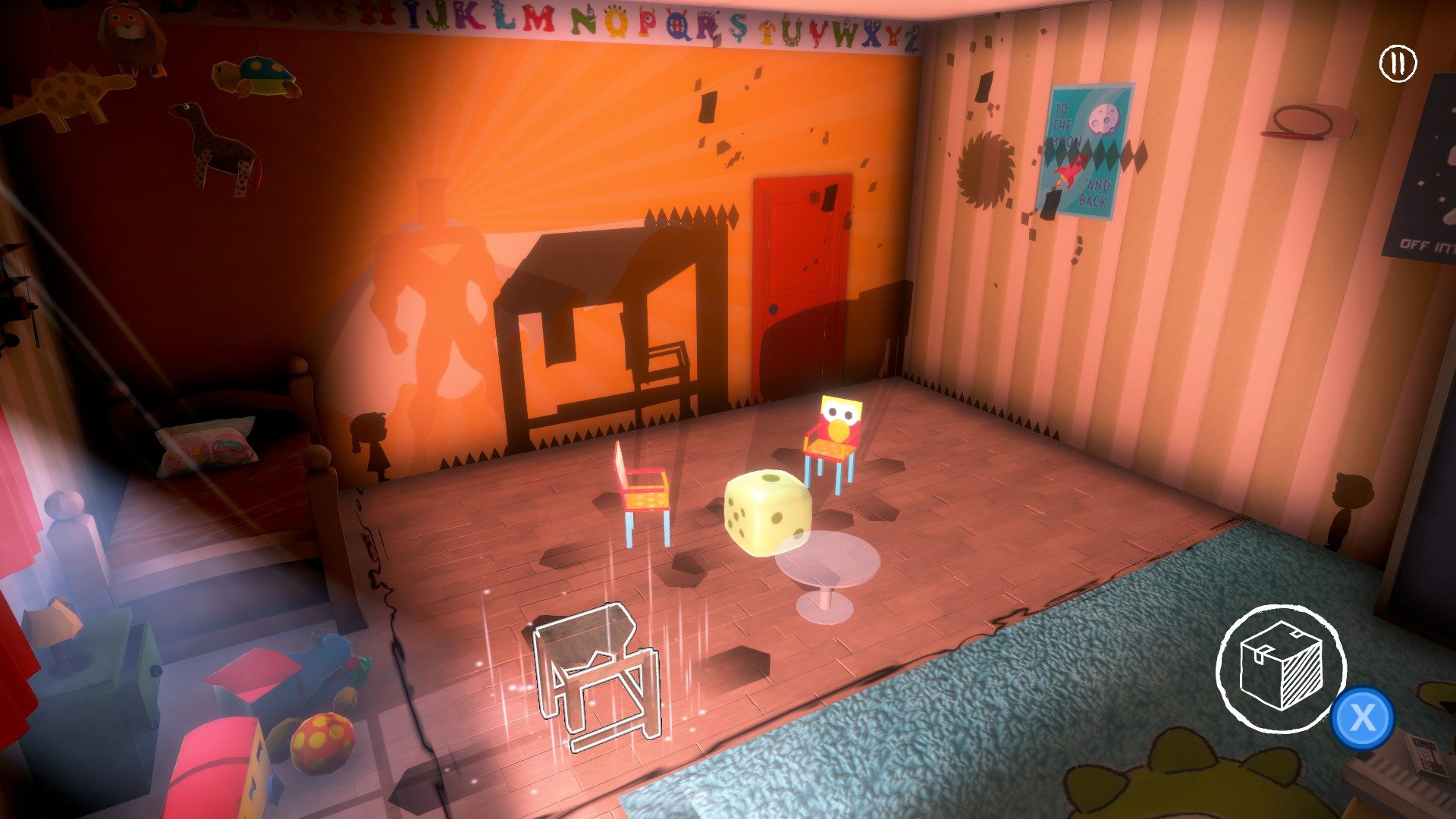

Although its premise has technically been done before, the shadow-bending, puzzle platforming gameplay of In My Shadow is still novel enough to inspire a sense of intrigue upon playing it. Thankfully, this relatively unique gameplay premise isn’t just for show, as it impacts the ways in which players think about the game space in surprising ways. Although the game can be finished in only a few hours, In My Shadow explores its concept thoroughly enough within its timeframe that it’s well worth experiencing.
The basic goal in each stage of In My Shadow is relatively straightforward. The player controls the projection of a little girl’s shadow, and they are tasked with guiding her from one side of the wall to the other while collecting any floating sheets of paper along the way. Most objects in the foreground cast their own shadows onto the wall, and the girl is capable of interacting with these shadows as if they are physical, two-dimensional objects. Players can shift and rotate certain objects in the foreground to manipulate the shadows on the wall, and this must be done so that the girl can safely navigate her way toward her objectives. This gameplay premise is effective in its simplicity; despite its relatively abstract nature, most of the core gameplay elements are clearly communicated, and the game wastes little time in teaching new mechanics before quickly ramping up the challenge. In My Shadow also succeeds at not overwhelming players; each puzzle is compact enough that every element players need to consider is immediately visible, and once a solution is reached, navigating the girl through the shadowy course should rarely take more than half a minute. This diminishes the risk of players getting burnt out even after the most perplexing of puzzles, and it succeeds in motivating players since the pieces needed to solve the puzzle will always be relatively few in number.


In My Shadow paces its puzzles well for the most part. The game is split into five sets of puzzles, and each set introduces a new major gameplay element to contend with. For instance, the second set extends its puzzle areas into an adjacent wall, and the third set sees objects casting shadows onto both walls at once. Even within puzzle sets, new twists on the gameplay are continually introduced at a steady rate. One puzzle will feature an immovable object, forcing players to account for its placement within the foreground space when positioning shadows. Another puzzle will include objects that crumple when the girl jumps off of its shadow, which necessitates further strategic placement of foreground objects. Not only do these gameplay introductions facilitate a smooth difficulty curve, but they also ensure that players will never be solving the same kinds of puzzles for long, which goes a long way toward keeping them engaged. The puzzles also strike a respectable balance between providing a challenge and offering players multiple methods of completion. The degree of variability in how shadows can be projected along with the somewhat forgiving hitboxes that allow the girl to stand on tiny edges mean that players are encouraged to experiment with the shadow mechanic and solve puzzles in ways that developer Playbae may not have intended. It’s a small touch, but it encourages players to think more about the logistics of the shadow mechanic rather than treating each puzzle as a set of instructions.


Where In My Shadow falters somewhat is in its story. On its own, the story is far from bad; it follows the player character through her childhood and her regrets about the ways in which she treated her family. It’s a narrative that feels very personal for the developer, and it’s hard not to be at least somewhat invested in the events that slowly transpire due to the sincerity on display. The issue is, aside from some light thematic connections, the gameplay and story do not synergize as much as they could have. There was clearly an attempt to connect them, however; the end goal of each puzzle is represented by members of the girl’s family, and they often disappear when the girl tries to hug them upon a level’s completion, clearly communicating the distance that exists between them. But during any given moment of gameplay, I am constantly thinking about how to carefully manipulate shadows so that the girl avoids falling into spikes and floating sawblades—any thought of her relationship with her family tends to be lodged into the back of my mind. The final set of puzzles does manage to combine gameplay and story more elegantly, but it comes at the cost of the puzzles’ complexity. The gameplay mechanic introduced during these last few puzzles is barely given any time to develop, and the difficulty curve lacks the relatively consistent escalation seen in the rest of the game. Narratively, it’s a perfectly fine conclusion, but the gameplay doesn’t quite feel like it gets the sendoff it deserves.


Despite these problems, it’s hard to go wrong with In My Shadow. It’s a remarkably solid puzzle platformer that demonstrates a strong understanding of pacing and difficulty, and these aspects make its fairly unique premise feel that much more realized. The story may not be perfectly executed, but the small shadow it casts over the experience is not nearly enough to nullify where it shines brightest.
Score: 8 out of 10
Reviewed on Windows 10 PC
Play games, take surveys and take advantage of special offers to help support mxdwn.
Every dollar helps keep the content you love coming every single day.
